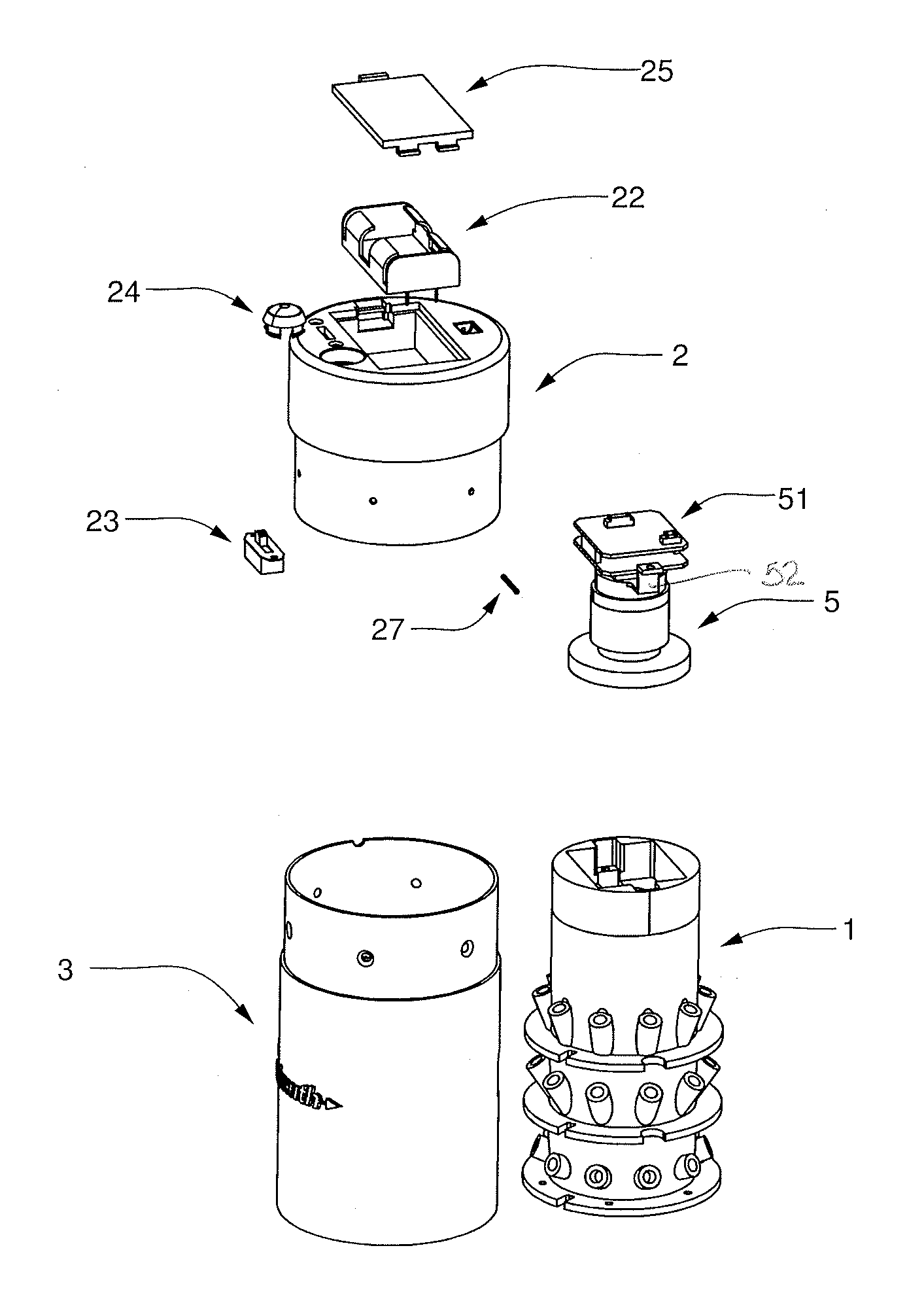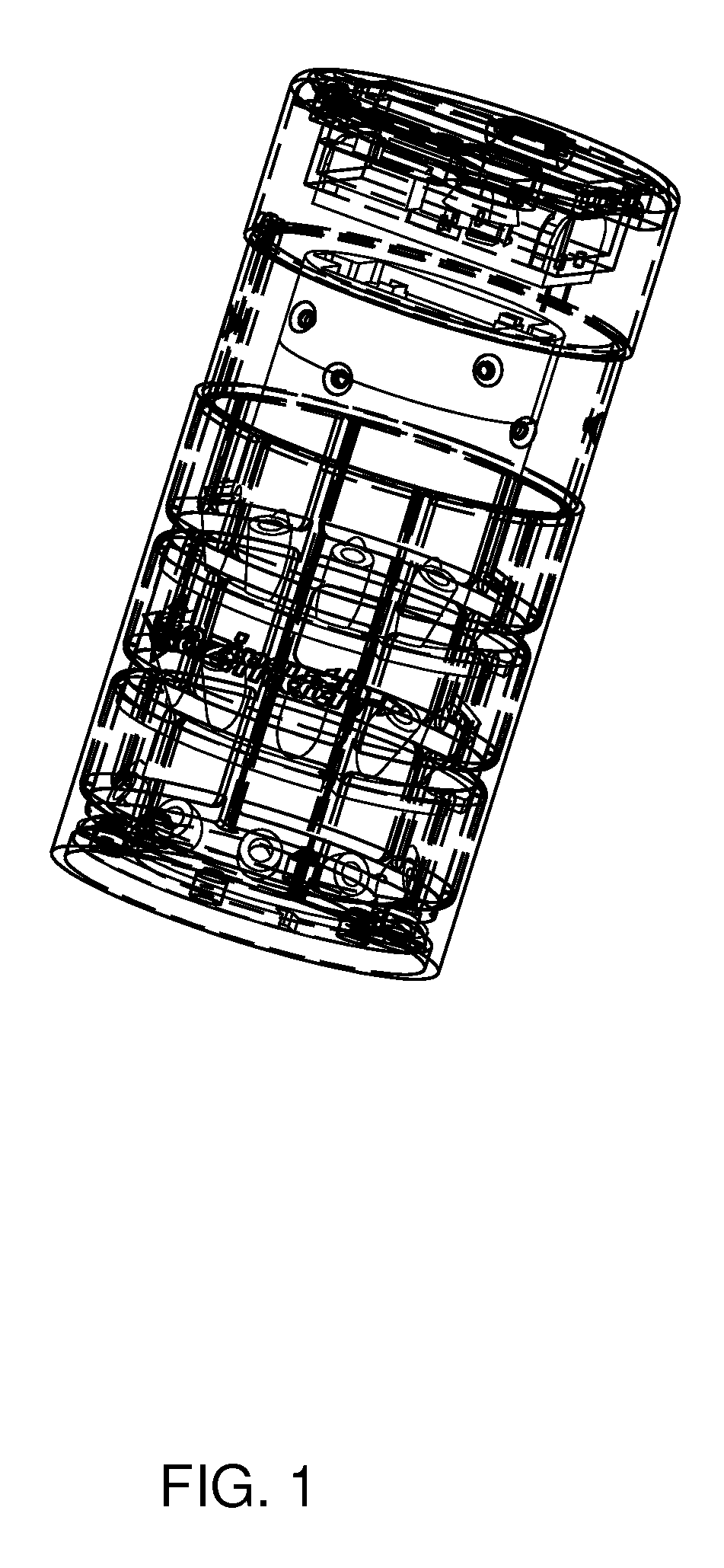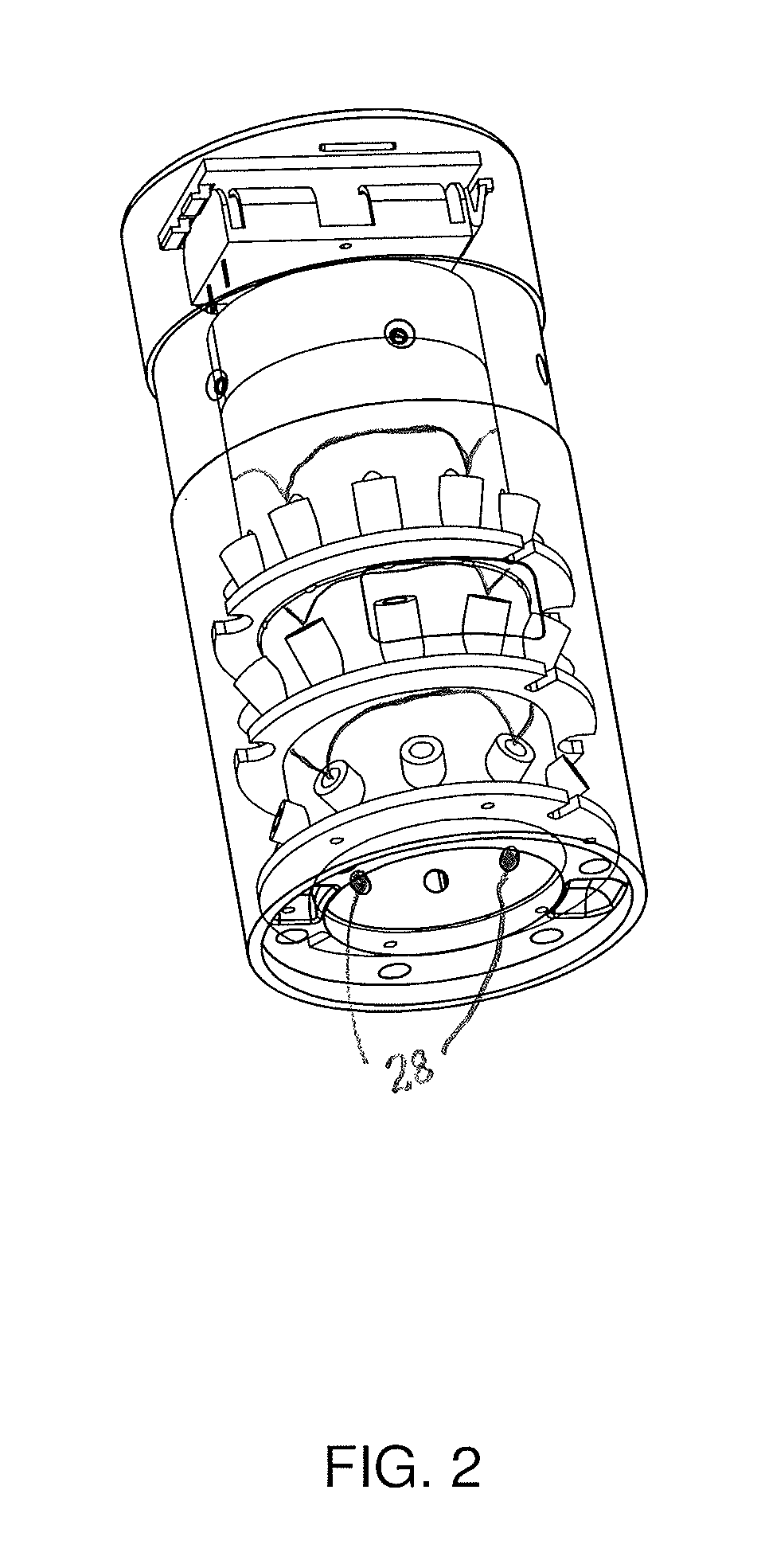Photographic fingerprint collection and imaging system
a fingerprint collection and imaging system technology, applied in the field of fingerprint collection system, can solve the problems of difficult observation and collection of latent fingerprints, difficult techniques that require expensive digital cameras, and high cost of digital cameras
- Summary
- Abstract
- Description
- Claims
- Application Information
AI Technical Summary
Benefits of technology
Problems solved by technology
Method used
Image
Examples
Embodiment Construction
[0035]Lens System. The lens system of the present invention comprises a lens 5, a support bracket 52, and a circuit board 51. In an embodiment, the lens is a single element 16 mm lens coupled with a sensor having a resolution of between 1600 and 2000 pixels (or higher), having a form factor of ⅓″ CCD and a spectral response at wavelengths of 380-750 nm (for visible detection) and 365-405 nm (for UV fluorescence detection). The sensor further comprises a TWAIN interface to allow it to communicate with image processing software.
[0036]Furthermore, preferably coupled with the lens are illumination optics, including a thermo formable diffuser film, matt finish, with at least 60% transmissivity.
[0037]Image Sensors. There are two available sensor technologies solutions to image fingerprints given the present application: the CCD (Charge Coupled Device) and the CMOS (Complimentary Metal Oxide Semiconductor). Both technologies capture light from the lens, and convert it into electronic signa...
PUM
 Login to View More
Login to View More Abstract
Description
Claims
Application Information
 Login to View More
Login to View More - R&D
- Intellectual Property
- Life Sciences
- Materials
- Tech Scout
- Unparalleled Data Quality
- Higher Quality Content
- 60% Fewer Hallucinations
Browse by: Latest US Patents, China's latest patents, Technical Efficacy Thesaurus, Application Domain, Technology Topic, Popular Technical Reports.
© 2025 PatSnap. All rights reserved.Legal|Privacy policy|Modern Slavery Act Transparency Statement|Sitemap|About US| Contact US: help@patsnap.com



